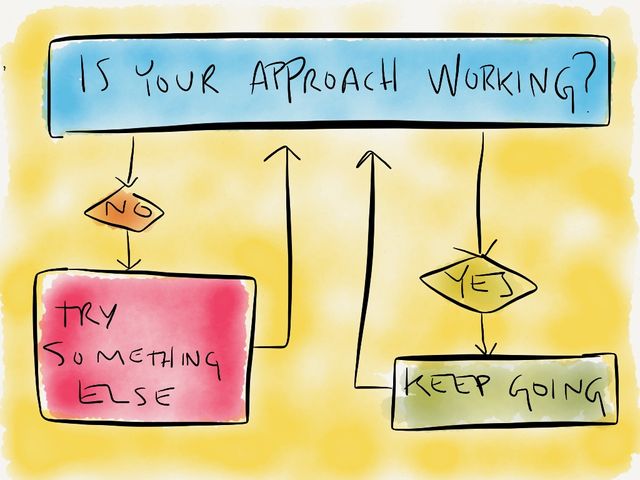Sometimes you have a great idea for a project, or one aspect of a project, and you throw everything at it, but the idea turns out to be a dud. You can’t ditch the project after putting so much into it, but neither can you force it through. The only way forward is to take a step back.

Chalk Outline
When I started writing this blog series in November, I was in a hurry to post articles right away — ignoring everything I know about good process. I posted a few pressing thoughts, and then tried to write my way through the 5-step process from one end to the other.
It didn’t work, and each post is now taking me longer and longer to write, with more frustration than the last. I’ve written this post 4 times now, each time on different topics.
Starting from an outline can be comforting, but it’s not possible to organize material you don’t yet have, and you end up pushing yourself off in the wrong direction. That’s where I went wrong.
Play it Again
I skipped a step, and now I have to go back and do it right.
It’s time to gather all my material and see what I have, generate more ideas, scrap the failures, and rearrange what’s left into articles. This may take some time, but once that is done I should be able keep up a regular posting schedule.
Recycle
Lucky for me, none of my failed posts are wasted effort. They all work towards the goal I should have started with: collecting material. I have a recycling bin for every project — a file or folder to catch all the scraps as I work. Now I have a substantial start on what I need: my very own “Fuck the Muse” shitty pile of shit.